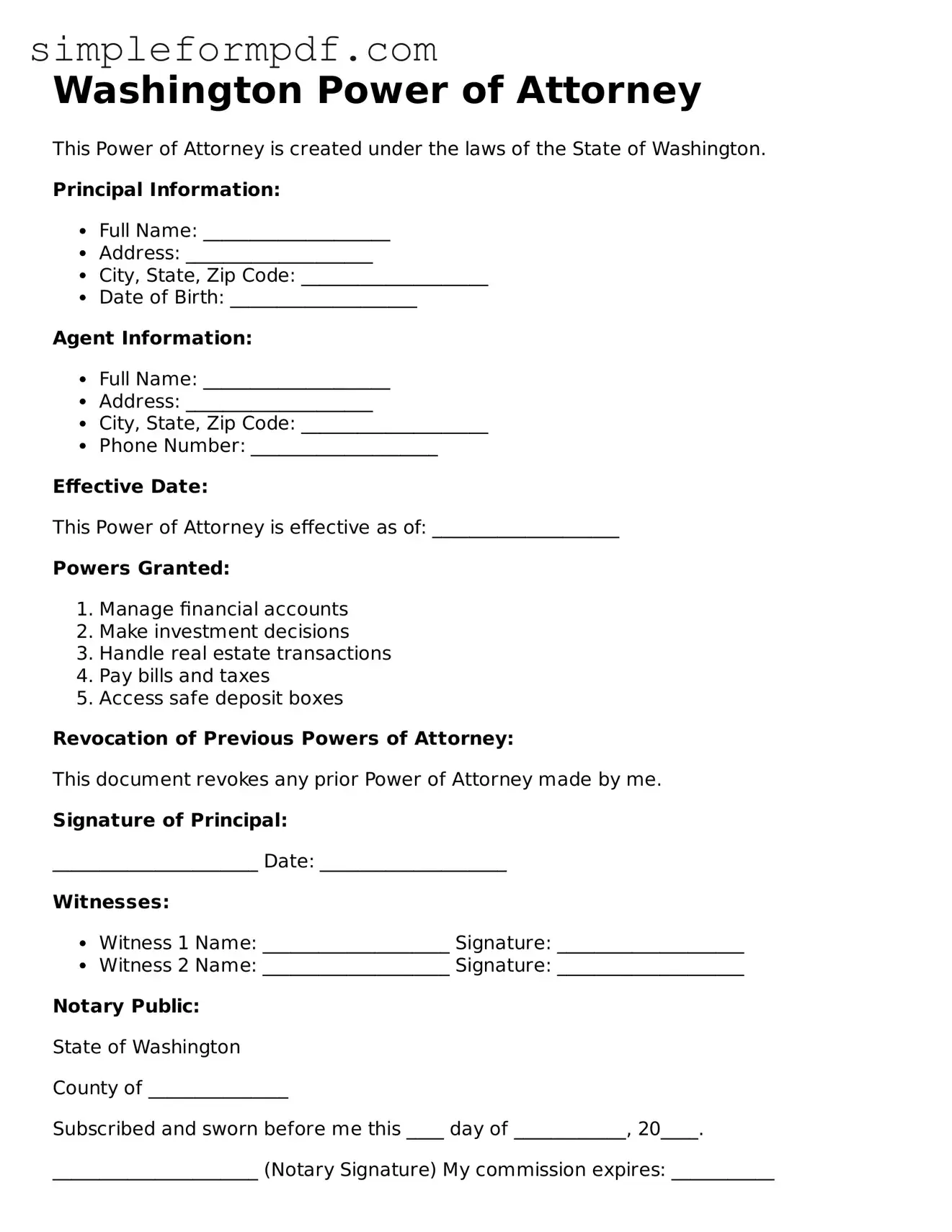Washington Power of Attorney
This Power of Attorney is created under the laws of the State of Washington.
Principal Information:
- Full Name: ____________________
- Address: ____________________
- City, State, Zip Code: ____________________
- Date of Birth: ____________________
Agent Information:
- Full Name: ____________________
- Address: ____________________
- City, State, Zip Code: ____________________
- Phone Number: ____________________
Effective Date:
This Power of Attorney is effective as of: ____________________
Powers Granted:
- Manage financial accounts
- Make investment decisions
- Handle real estate transactions
- Pay bills and taxes
- Access safe deposit boxes
Revocation of Previous Powers of Attorney:
This document revokes any prior Power of Attorney made by me.
Signature of Principal:
______________________ Date: ____________________
Witnesses:
- Witness 1 Name: ____________________ Signature: ____________________
- Witness 2 Name: ____________________ Signature: ____________________
Notary Public:
State of Washington
County of _______________
Subscribed and sworn before me this ____ day of ____________, 20____.
______________________ (Notary Signature) My commission expires: ___________
